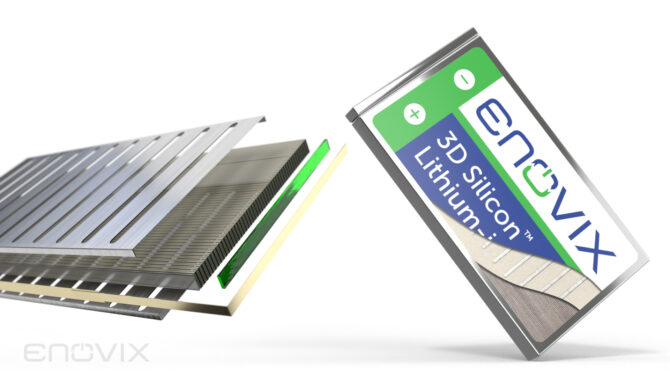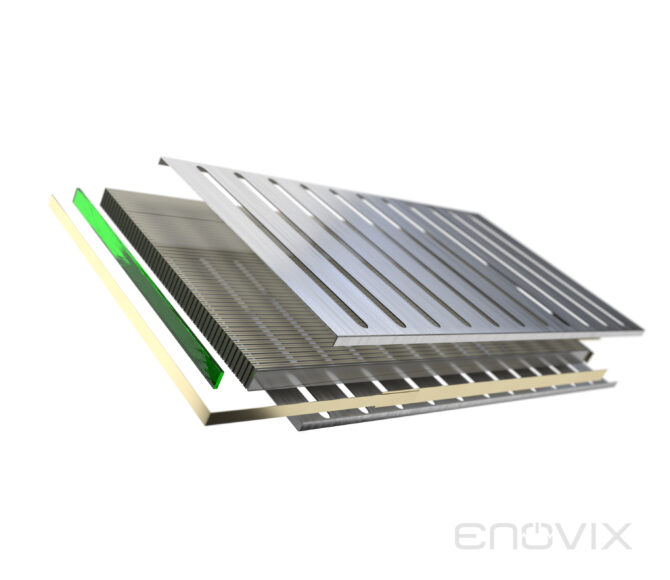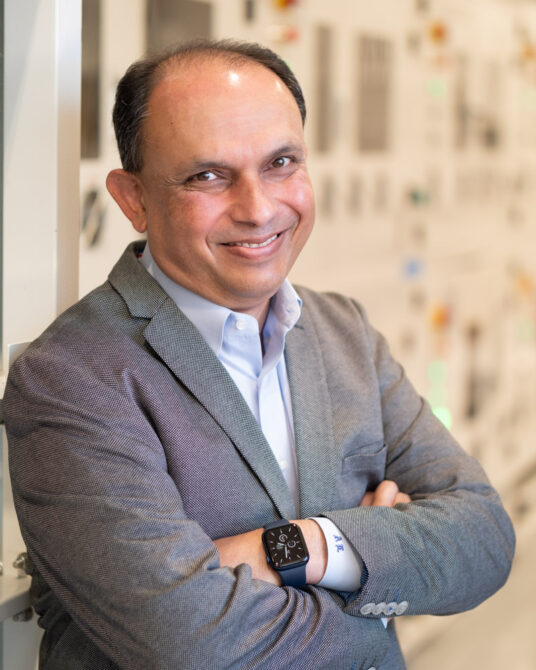
How 3D architecture experts created a new and improved battery
Stephen Law
Electronics Power Supply / Management Engineering Supply Chain battery lithium-ion power silicon-anodeMost technologies of the future, such as artificial intelligence, Edge computing, 5G, electric vehicles, augmented reality and virtual reality – all require greater battery energy density. Building and scaling a battery containing a 100% active silicon anode has long been a goal of the industry because it dramatically increases energy density and performance.
Enovix Corp., a Fremont CA-based developer of next generation silicon-anode lithium-ion battery production, has created a proprietary cell architecture that enables a 100% active silicon anode, which translates to a battery with high energy density, high cycle life and fast charging without compromising safety. Enovix is building an advanced silicon-anode lithium-ion battery production facility in the U.S. for volume production.
For this article, EP&T Magazine spoke with Ashok Lahiri, Enovix co-founder and chief technology officer, who has served as a technical advisor to the firm since February 2023. Prior to that role, he had been chief technology officer since co-founding the company in 2007. Lahiri has been lead architect of the Enovix 3D silicon Lithium-ion rechargeable battery, responsible for design and implementation of the firm’s patented 3D cell architecture and high-capacity silicon anode.
Enovix believes it has the next great advancement in battery tech. Describe the company’s proprietary cell architecture that increases energy density and maintains high cycle life.
Enovix has reinvented the battery architecture by replacing the jelly roll design that is seen in many conventional batteries with an innovative stacked design. The jelly roll architecture is made up of sheets of anode, separator and cathode rolled together, which wastes volume due to the lack of precision and the fact that a round object is placed in a rectilinear package. The Enovix cell architecture instead stacks its cathodes, anodes and separators side by side, allowing a more efficient use of the battery’s volume, leading to improved overall energy density and the ability to use a 100% active silicon anode.
Most conventional Li-ion batteries often use graphite anodes. However, at Enovix we use 100% active silicon anodes. Silicon is a plentiful and sustainable ingredient that can theoretically store more than twice as many lithium ions as graphite. The use of silicon translates to a battery that has high energy density in an efficient form factor. Enovix also uses an integrated constraint system to keep the cell under constant pressure, which keeps the electrodes from disconnecting and cracking and improves the battery life cycle.

Source: Enovix Corp.
What makes the Enovix battery so unique to what is currently available on the market today?
The architecture of Enovix batteries is something the industry has never seen before. For decades the industry has made batteries mostly the same way, working to improve the materials and chemistries inside the battery, until Enovix’s 3D architecture strayed from the paradigm. Our background in 3D architectures, along with our passion for problem solving, convinced us we could produce the next generation Li-ion battery. By replacing the traditional jelly roll design with a precise laser cut design with stacked anodes, separators and cathodes, Enovix’s cells allow for a more efficient use of the battery’s volume.
The architecture also enables a breakthrough in Li-ion battery safety, called BrakeFlowTM. The Enovix 3D cell is divided into many sub-cell units, each holding a small fraction of the battery’s energy and each having a discrete connection to a common anode or cathode busbar. Each sub-cell is connected to the common busbar through the BrakeFlow system that is engineered, based on the number of electrodes and the individual electrode’s area, to limit the discharge current from the remainder of the cell, through the shorted subunit. If BrakeFlow is working properly, the power dissipated at the short should not raise the temperature around the short location enough to trigger thermal runaway. With BrakeFlow incorporated, instead of a sudden catastrophic release of energy, the battery is designed to discharge slowly and safely.
Why has it been so difficult to manufacture, up until this point.
Manufacturing is often one of the more difficult phases when developing a first-of-its-kind technology, especially if the tools don’t already exist. Often several iterations of tooling are required before the needed efficiency is achieved. This is not unlike what many other industries like solar or semiconductor have gone through. With each successive iteration, the manufacturing process has become more and more efficient. This is why we’re projecting, based on learning from our Gen1 toolset, that our Gen2 toolset is expected to perform significantly better.

How does the architecture of this Li-ion battery technology make it smaller, more energy dense and better for the environment?
Our batteries have a 100% active silicon anode. Silicon is a plentiful and sustainable ingredient that can theoretically store more than twice as many lithium ions as a graphite anode, which is used in most conventional Li-ion batteries today. The use of silicon within our battery architecture translates to a higher energy dense battery in an efficient form factor.
If you need a battery with a given amount of energy, by packing more energy into the same form factor there is less waste of the inactive materials of the cell like the packaging.
What design segments do you anticipate being the most common for this technology?
We’re focused first on serving our customers that produce small, wearable consumer electronics, then moving to larger cells for devices such as mobile phones and laptops.
What types of consumer electronic devices are the most likely to adopt this battery type?
We believe the technologies of the future need a better battery, everything from wearables to EVs. We are working with some of the world’s largest consumer electronic companies – including Samsung and others.
Where is the production facility located and when can the electronic design community have access to this technology?
Enovix’s first production facility is in Fremont, California (called Fab1). We announced in our November 2022 Letter to our Shareholders that we shipped qualification cells from Fab-1 to accounts across many consumer electronics applications. In the future, our goal is to have devices with Enovix batteries in the marketplace.
——————-

Ashok Lahiri, Enovix co-founder and chief technology officer.
Enovix Corp. is a leading developer in advanced silicon-anode lithium-ion battery development and production. The company’s proprietary 3D cell architecture increases energy density and maintains high cycle life.
